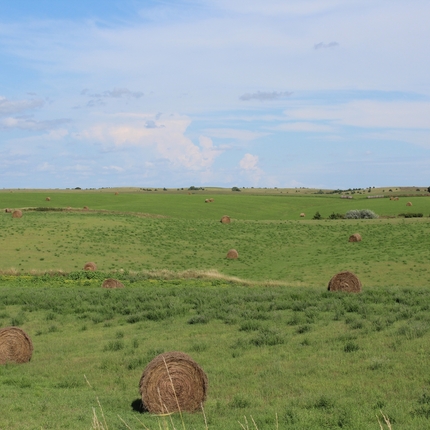Jordan Rasmussen contributed to this blog.
The president’s fiscal year 2019 budget was released last week. This is an annual event, where the president formally requests funding for government programs from Congress. Since government programs live and die by their funding, this is the major annual opportunity for the president to set comprehensive positions and priorities for the government’s work.
This latest budget includes many proposals that would be detrimental to rural America. While Congress has the final say on how to fund or not to fund, the president’s budget starts those negotiations for the next fiscal year.
We are concerned rural America has been dealt a very poor hand by this budget. Below, we unpack several of the most troublesome proposals.
Rural development
Once again, the president has proposed to eliminate many of the programs under Rural Development, including the entire Rural Business-Cooperative Service, the Water and Waste Disposal Grant program for rural areas, and Single Family Direct Home Loans. Also included are the Value-Added Producer Grant Program and the Rural Microentrepreneur Assistance Program. In a time when rural businesses often struggle and rural housing stocks are aging, this shows short-sighted thinking for the future of rural America.
Along with the budget, the president also released a $200 billion infrastructure proposal, including a $50 billion proposal with Formula Grants for rural areas supporting rural infrastructure. This funding structure implies that states will need to chip in to these projects. We are concerned about this difficult extra expense that is hard to justify during a time of low commodity prices.
Conservation severely threatened
The president’s budget proposes to completely eliminate two major conservation programs, the Conservation Stewardship Program (CSP) and the Regional Conservation Partnership Program (RCPP). This would severely hamper farmers’ abilities to incorporate conservation into their operations. While the budget also includes a proposal to increase funding for the related Environmental Quality Incentive Program, there is no mention of how CSP's mission would be preserved. EQIP offers a valuable entry into conservation by helping to fund individual conservation practices, however, CSP allows farmers to take conservation on their farms and ranches to the next level. Our farmers, communities, and landscapes deserve and need the comprehensive approach to conservation that CSP offers.
President Trump proposes to reduce funding to the account “Conservation Technical Assistance,” which supports the Natural Resource Conservation Service county conservation offices. This account received $759 million in 2017; the 2019 budget proposes to reduce this by $183 million, which is a 24 percent reduction.
We’ve heard from many farmers that their county offices are already struggling with small staff and high workloads. Now, imagine your county conservation office taking a 24 percent hit to its funding. Would it be open four days out of five? Would it lose one of four staff people? Such cuts to these offices should not be made – we remain very concerned of the impact these cuts would have on county offices’ ability to support farmers and ranchers incorporating conservation practices on their land.
Changes to crop insurance and commodity payments
President Trump proposes limiting commodity payments and changing crop insurance. We are heartened to see consideration given to payment limitations, which we have encouraged for several decades. Some of the proposals, however, are being made without consideration to the impact they would have on farm country.
For example, one proposal is to limit commodity and conservation payments and crop insurance subsidies to entities with an adjusted gross income of $500,000 or less. Currently, there is a similar limitation for farmers and ranchers with adjusted gross incomes of $900,000, applied only to commodity and conservation programs, and no similar limitation on crop insurance subsidies. While we have long thought that adjusted gross income limitations should be applied to crop insurance as well as commodity and conservation payments, our plan to extend the existing limitation of $900,000 to crop insurance subsidies would be the fairer course.
Another proposal in this budget, one we support, is to limit all farms to one manager who can qualify as “actively engaged.” The U.S. Department of Agriculture was required to pass such rules, ordered by the previous farm bill, but the final rules were watered down. The above limitations of payments to farms and ranches with an adjusted gross income under a certain level can only be enforced with strong “actively engaged” rules.
In addition, the president proposes to slash subsidies for most crop insurance policies by 10 percent. We take issue with the current structure of crop insurance premium subsidies, and support a premium subsidy cap of $50,000. Last year’s president’s budget included a more stringent version of this proposal (a lower premium subsidy cap of $40,000), and we are concerned this new approach would not bring fairness to the crop insurance system. It would instead have the largest impact on farmers who are struggling the most.
We do support a related proposal to reduce the premium subsidy for a crop insurance policy, called the Harvest Price Option. We urge Congress to eliminate this subsidy for Harvest Price Option altogether. The current Harvest Price Option allows farmers to use taxpayer subsidy dollars to bet on future crop prices. Harvest Price Option should not be subsidized.
SNAP
The president’s budget outlines a fundamental reshaping of the nation’s largest food assistance program, SNAP, the Supplemental Nutrition Assistance Program.
Currently under the program, recipients receive money loaded onto an EBT card that can be used to purchase qualified food items at local food retailers, including many farmers markets.
President Trump is proposing to slash more than $214 billion in SNAP funding during the next 10 years, by halving direct SNAP assistance for most beneficiaries, and substituting this cash assistance with a monthly distribution of shelf-stable items like milk, peanut butter, and canned meats.
This drastic reallocation of funding would severely limit attempts to bring more healthy, fresh foods into the homes of America’s food insecure, while also keeping these dollars out of local groceries and farmers markets.
Farm bill programs assumed to expire
Unfortunately, budget rules are also stacked against several programs vital to rural America. These rules state that any program that did not receive $50 million per year in the previous farm bill will expire, unless Congress actively decides to renew it. This is why the proposal shows that several incredibly valuable programs will no longer continue past September, including:
- The Beginning Farmer and Rancher Development Program;
- Outreach and assistance to socially-disadvantaged and veteran farmers and ranchers;
- Farmers Market and Local Foods Promotion programs; and
- Conservation Reserve Program - Transition Incentive Program.
The decision for these programs to continue lies with your representatives in Congress.
Organic agriculture
The National Organic Certification Cost Share Program and the Organic Agriculture Research and Extension Initiative are proposed to be zeroed out. However, we are glad to see a proposed increase in funding of $3 million to the National Organic Program to protect against fraudulent imports.
In short, the majority of the proposals in this budget would do a great deal to hurt rural America. We urge Congress to reject the harmful proposals in this budget.





